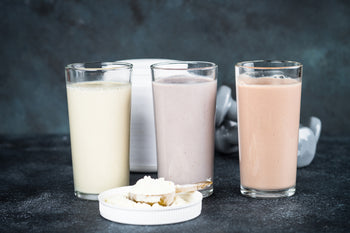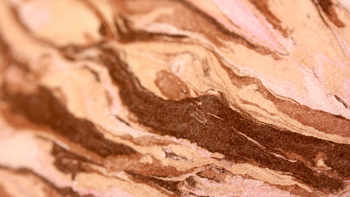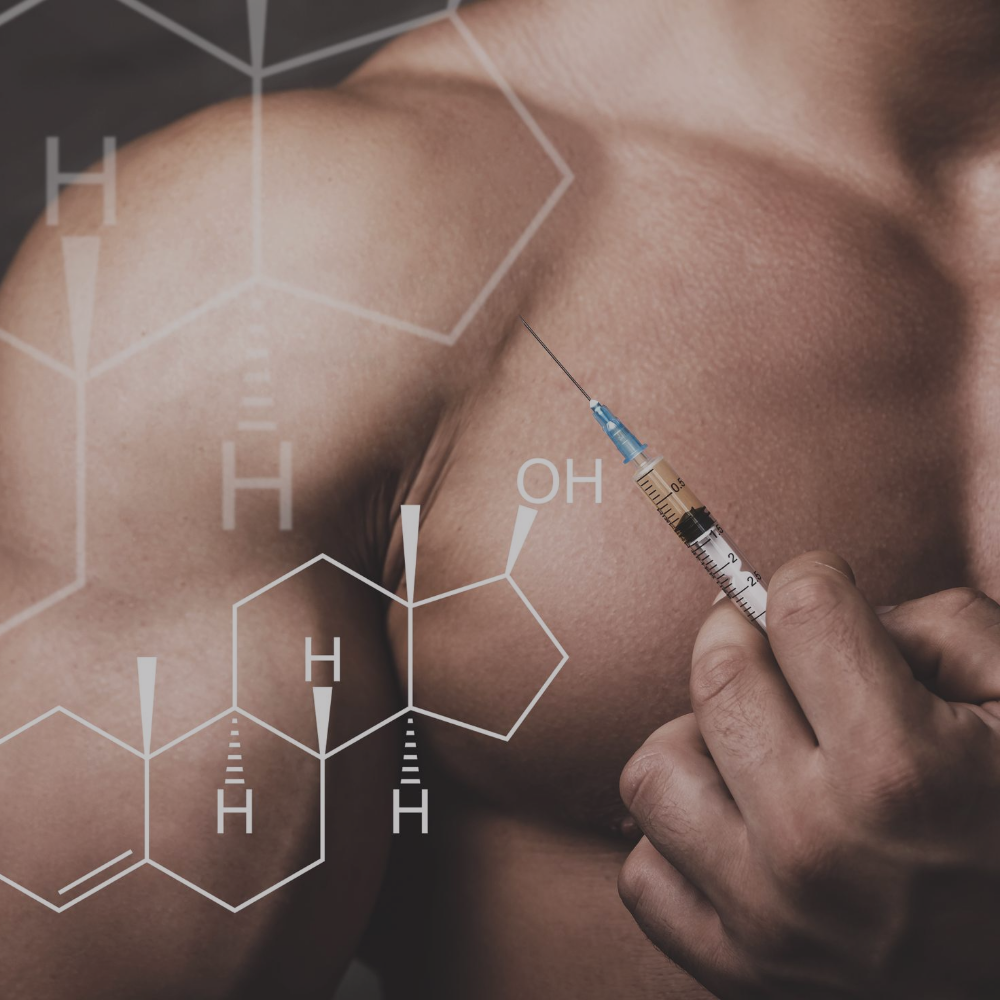 Categories
CategoriesDiet & Exercise
Discover More Articles

It’s no secret that stress can take a toll on our body, mind, and brain. December is not the month to throw your self-care and mental health priorities out the window.

5 Ways to Stay Motivated This Winter
When the seasons change it suddenly becomes harder to get out and exercise. Winter fitness programs aren’t the easiest to stick to, but they’re imperative to your overall health and well-being. So with that in mind, let’s take a look at what you can do to stay motivated and successful with your winter fitness goals.

How to Detox After Holiday Feasts
If you’re having a hard time committing to your diet over the holidays, you’re not alone. And the good news is you don’t have to be perfect to maintain your weight over the holiday season. Try following these simple detox tips after each scrumptious holiday meal and start the new year fresh and ready to finally achieve your health and fitness goals.

High Protein Meal Replacement Shakes
Meal replacement shakes aren’t just low in calories, they’re high in essential nutrients your body needs to keep yourself nourished and your stomach feeling full, while helping also you maintain or lose weight. Protein provides numerous benefits to your body, including fueling the entire body, helping build muscle mass and being a key component to essential substances your body needs, like antibodies and blood.

Skin Cycling: all about the newest trend
The skin cycling hashtag has been viewed over 3 billion times on TikTok—and dermatologists say it's a strategy worth trying.The term "skin cycling" is all about taking a cyclical approach to your facial skincare routine.

Get ready for a plumper, perkier-looking neckline
Meet our new luscious neck cream featuring our proprietary elasticizing bioactive plant blend that targets lines and texture, so your neckline appears smoother, renewed & 10 years younger looking!

TRENDING MAKEUP HACK: BLUSH & BRONZER AS EYESHADOW
By selecting shades that complement each other, you can achieve a harmonious and polished makeup look without the need for multiple products.

5 signs you need more electrolytes
Electrolytes help with hydration by ensuring the body can actually absorb and use the water you drink—preventing dehydration in the presence of sufficient water intake.

Ring In 2025 With ✨ Glowing ✨ Skin…And FREE Boosters!

Better Ingredients, Better You
Your health goals aren’t one-size-fits-all, so your supplements shouldn’t be either. That’s why we designed the Power Line to target different pillars of performance and wellness — from appetite control to anti-aging to athletic power.

Low testosterone in older men, often referred to as “male menopause” or even “andropause” is fairly well known — and testosterone replacement therapy in this age group has not been without its share of controversy, particularly with respect to heart health. Proper testing and dosing are all-important, as well as understanding a man’s physiology and all the factors that affect testosterone levels. For example, when giving testosterone transdermally it is critical to use testing methods such as dried blood spot or saliva to properly assess absorption of testosterone into the body, avoiding the problem of overdosing to achieve “normal” serum levels.
But while a decline in testosterone is a struggle that older men are coming to expect, what about the alarming suggestion that low testosterone is now becoming more prevalent in younger men? An article published last year has brought some attention to a link between poor health and low testosterone levels in younger men. Let’s take a closer look at this article to see who might be at risk.
Study of Testosterone Levels in 3 Age Groups
The investigators who wrote the article, published in Scientific Reports [1], analyzed publicly available data from the CDC’s National Health and Nutrition Examination Survey (NHANES). Of the men older than 20 who participated in NHANES, 2161 had the complete information required for this study, including a serum total testosterone measurement, information on chronic diseases including cardiometabolic risk factors, and handgrip strength measurements.
Total testosterone (TT) deficiency, defined as a serum level <300 ng/dL, was seen in:
- 22.6% of the young men (aged 20-39.9 years)
- 35.8% of the middle-aged men (aged 40-59.9 years)
- 34.6% of the older age group (aged 60 or older)
Among the men with low TT there was a significantly higher prevalence of either a single chronic disease or multiple diseases (multimorbidity). This was particularly striking in the younger age group, in which 36.4% of the men with low TT had more than one chronic disease, compared to only 13.5% of the men with normal TT.
Why the Difference with Published Reference Ranges for Young Men?
Harmonized, age-specific reference ranges for TT were recently published to help with diagnosis of hypogonadism and were based on 4 cohort studies in the US and Europe [2]. The 5th-95th percentile range for TT in healthy, non-obese men aged 19-39 was 303-852 ng/dL. However, TT values in the same age group in the NHANES cohort were substantially lower; the 5th percentile of this cohort had a TT of only 182 ng/dL. All testosterone measurements in the cohort studies and the NHANES cohort were by mass spectrometry (LC-MS/MS in the NHANES, the Framingham Heart Study cohort, and the Sibling Study of Osteoporosis epidemiologic study; and GC-MS/MS in the European Male Aging Study and the Osteoporotic Fractures in Men study).
Notably, the average BMI in the younger men (aged 20-39.9 years) in the NHANES study [1] was 27.95 kg/m2, and the prevalence of obesity (defined as a BMI > 30 kg/m2) was 29.8% in this group. Therefore, the authors of the NHANES-based study argue, using only healthy, non-obese men for the harmonized reference range is not really representative of the current demographics in the US, where obesity is now prevalent even in younger age groups.
Is it surprising that a group of men with an average BMI of 27.95, already in the “overweight” category (BMI between >25 up to 30), of whom almost 30% are technically obese, shows a high prevalence of TT deficiency — as well as a high prevalence of the same chronic diseases that are linked to obesity? The diseases that were significantly more prevalent in the men in the young age group with TT deficiency were: abdominal obesity, diabetes, cardiovascular disease, hypertension, clinical depression, low HDL cholesterol, and high triglycerides. Shouldn’t we also note that some of the drugs used to treat these conditions are known to lower testosterone levels in men, including statins, some antidepressants, and anti-hypertensives? The study authors state in their paper that the cross-sectional design of NHANES meant that it was not possible to tell whether low T caused the higher incidence of chronic diseases or whether the poor health of the men itself caused the decline in T levels, and that they were also not able to tell if medication use by the men influenced the results.
Low Testosterone and Chronic Diseases
Abdominal obesity, often referred to as “central adiposity,” is known to be a strong cardiometabolic risk factor that is linked with the development of chronic diseases like insulin resistance, metabolic syndrome, and ultimately diabetes.
Studies have found that men with low T and low SHBG who do not yet have metabolic syndrome or diabetes are significantly more likely to go on to develop insulin resistance or diabetes.
Where does testosterone come in? Large, population-based longitudinal studies have found that men with low T and low sex hormone binding globulin (SHBG) who do not yet have metabolic syndrome or diabetes are significantly more likely to go on to develop insulin resistance or diabetes [3][4]. SHBG is the main binding protein for testosterone in the circulation and largely controls the availability of free testosterone to tissues, and it also affects the total amount of circulating testosterone – the more SHBG, the greater the amount of total testosterone being carried around in the circulation, and vice versa. Obesity is known to decrease SHBG levels while aging increases them, but the effect of obesity in driving down SHBG is greater than the effect of aging in raising it, with consequent effects on total testosterone measurements [5].
Low SHBG has also been identified as a surrogate marker for insulin resistance because of its strong negative association with fasting insulin levels. Studies have indicated that the suppression of hepatic SHBG production in insulin resistance is mediated through monosaccharide-induced lipogenesis, which in turn reduces levels of a hepatic transcription factor that controls the SHBG promoter [6][7]. So young men who are showing a tendency towards insulin resistance will have low SHBG and consequently low TT.
What Could Influence Total Testosterone in the Younger Men with Multimorbidities?
A number of mechanisms have been proposed to explain low TT levels in men with central adiposity and/or insulin resistance:
1) low SHBG associated with adiposity and insulin resistance drives down TT levels;
2) aromatase present in adipose tissue uses up testosterone as it converts to estradiol, which then further shuts down testosterone production in the Leydig cells through negative feedback on the hypothalamic-pituitary-gonadal system;
3) insulin resistance itself directly inhibits testosterone production in Leydig cells.
What about men who exhibit low TT before developing central adiposity or insulin resistance? If they have a sedentary lifestyle or a habitual high refined carbohydrate intake, this can impact SHBG production directly through hepatic monosaccharide exposure, predisposing them to both low TT and risk of obesity.
Can Lifestyle Modification Be the Key to Increasing Total Testosterone?
In obese or overweight men, lifestyle changes that reduce central adiposity, such as diet and exercise, naturally increase endogenous testosterone production. As adiposity and insulin levels decrease through weight loss, SHBG rises and thereby increases circulating TT levels. Could testosterone replacement help things along? A single blind 52-week study in older (late 50s) hypogonadal men with type 2 diabetes found that a diet and exercise program significantly improved testosterone levels, measures of glycemic control and metabolic syndrome markers, but the improvements were enhanced by the addition of 50 mg/day transdermal testosterone gel treatment [8].
What about the effects of stress on young men today as they pursue their careers and raise young families? Chronic elevations in cortisol levels as a result of persistent stress prolong the metabolic changes that are normally supposed to be a short-term response to a stress stimulus, and these changes can lead to visceral (central) adiposity and insulin resistance, lowering SHBG and TT levels.
Before young men start rushing off to their doctors and demanding testosterone replacement therapy in the hopes that it will reverse their chronic health conditions, they would be wise to take a look at their lifestyles and see if they can modify some of their own risk factors.
Losing some weight, getting more exercise, getting a handle on chronic stress, and eating a healthier diet are all great ways to start. But also addressing health conditions like depression and hypertension by non-pharmacological means, with the support of an integrative health physician, would help avoid using the drugs that can lower testosterone. Not only will more natural interventions help improve their overall health, but any resulting increase in their own testosterone production will also improve vitality and energy.
Younger men can take a leaf from the book of older men who are already looking for natural ways to improve their hormone balance – it’s never too early to start!
